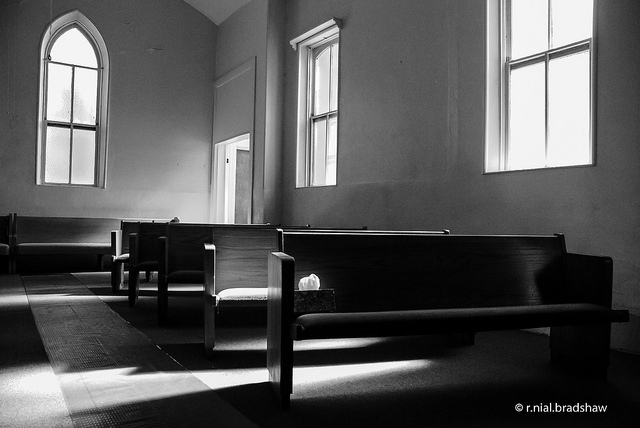On Advent Hymnody
By Elisabeth Urtel
Savior, Show Thy Power and Glory
Yea, amen! Let all adore Thee,
High on Thine eternal throne;
Savior, take the power and glory,
Claim the kingdom for Thine own.
The above quotes the last verse of “Lo, He Comes With Clouds Descending,” a 1758 Charles Wesley hymn cherished especially in the Anglican tradition, imparted to Lutherans through modern English hymnals. Residing in either the Advent or End Times piece of your service book, it may be used to teach several facets of the resurrection and second coming of Christ. However, understanding this part correctly is crucial to preserving the personal union.
In singing “Savior, take Thy power and glory/ Claim the kingdom for Thine own,” one might be confessing that Jesus, while in his humiliation, did not have His omnipotence or kingly office. This is incorrect – Christ merely hid His divine attributes for a time, or by His own will did not fully and publicly use them. To say that He did not have them for a time means that He put off His divinity, or that His human nature in the humiliated state was not able to contain these things. Such a belief, that the finite can’t contain the infinite, is a key concept in Reformed theology.
Yet, this divides Jesus’ divine and human natures, rendering Him to be less than God – making our upcoming celebration of His incarnation impossible.
There are a couple different ways to describe the humiliation. One is concealment, in which He still fully possessed divine glory, but hid it for a time. Another way is that He did not completely use it. Explaining Christ’s advent as “laying His glory by,” as the well-known Nativity hymn states, He also leaves behind His divine majesty, a characteristic He must always possess to be God. The Lord’s humanity held all of the same attributes as His divinity, but merely did not constantly or wholly apply them.
Understanding that this verse depicts Jesus’ enthronement at the Father’s right hand according to His human nature, we can understand this correctly as Lutheran hymn-singers. A better way to translate and sing this might be “Savior, show Thy power and glory…” if we’re meaning both natures.
Now, let’s compare the last lines. Every hymnal is different!
Lutheran Service Book continues,
Alleluia!
Thou shalt reign and Thou alone.
Christian Worship alters the entire verse slightly, exchanging the part questioned above for a Philippians 2:5-11 reference:
Yea, Amen, let all adore you
High on your eternal throne.
Ev’ry knee shall bow before you;
Come and take your people home!
Alleluia!
You shall reign and you alone (CW 29)!
Declaring that Jesus reigns “alone” may intend to show His victory over sin and the world, but it might also be construed as a Unitarian idea – He rules apart from the Father and the Holy Spirit. While some editors wish to keep these hymn texts close to the original, it’s best to utilize language that leaves no room for the opposite viewpoint.
It’s interesting to note that many Reformed hymnals, in distinction from the other two, close this poem with an anticipation of Christ’s coming. Wesley’s hymn paraphrases several earlier verses by Rev. John Cennick, which conclude identically to my preferred hymnal’s version:
O come quickly!
Alleluia! Come, Lord, come!
Confessing this hymn as written makes literal sense only in the End Times – as the Church Triumphant beholding the crucified and risen Savior in the flesh. However, as the Church Militant, “…now we watch in struggle/ And now we live in hope” (ELH 534), and could and ought to cry “Amen. Even so, come, Lord Jesus!” (Rev. 22:20).
May this Advent theme of watchfulness and joy be our prayer as we remember the Lord’s descent to earth, when He imparted His majesty to human flesh. Let us, too, watch and rejoice for the true Son of Man’s descent to deliver us home, where this eternal glory will be revealed to us in full (1 Peter 4:13).




4 Comments
MrsReeder
My Pastor made the point in an Advent midweek sermon, that Christ’s throne understood properly is the Cross. There He shows His might and glory…in His most humilitated state.
Diane
Hi Elisabeth,
Thank you for this fine analysis of the final stanza of ‘Lo! He Comes with Clouds Descending’. I like your detail. I love looking at hymns and analyzing the theology and structure of a hymn. To be honest, I never would have noticed the theological misstep of the word ‘take’ and I’ve been studying Lutheran hymnody for a long time.
I also have visited your blog, ‘Her and Hymn’. I’ve just become a choir director for the first time and I’m in the process of choosing music for the Lenten and Easter seasons of the church year. I hear complaints all the time about the music being too hard, etc. I like your advice on your blog and I will use some of it the next time I have to defend a selection I’ve made! Thank you.
In Christ,
Diane
Elisabeth
@MrsReeder #1
Good point!
Elisabeth
@Diane #2
You’re welcome! When Lutherans select Reformed Advent hymns, they should always be aware that they view the humiliation differently. The same goes for Easter season hymns and the exaltation.
Congratulations on your new position! Another blog I enjoy for hymnody/liturgical practice is “Ponder Anew.” The author provides cases for increased musical instruction in the church, and you’ll find lots of support!